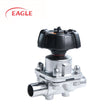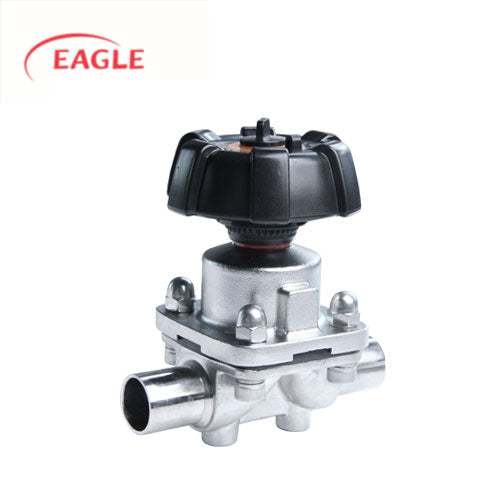
1/2"-Handmembranventil – 316L hygienischer/aseptischer Edelstahl
-
Kostenloser Versand
Bei allen Bestellungen über 199 $
-
Sonderangebote
Regelmäßige Verkäufe und Rabatte
-
Einfache Rückgabe
Problemlose Rückgaberichtlinien
-
Chat-Funktion
Sprechen Sie mit einer echten Person
Hygienische Membranventile für hochreine Prozessrohrleitungen
- 3A Manuelle Membranventile
- 316L für Flüssigkeitskontakt
- Betriebsdruck 10 bar
- EPDM-Versiegelung: -20℃ ~ 135 ℃ (150℃ Max. 20min)
- VMQ-Versiegelung optional
Dank seiner vollständig geschlossenen Konstruktion (kein Kontakt mit externen Flüssigkeiten) werden Kontaminationsrisiken ausgeschlossen und strenge Hygienevorschriften eingehalten. Erhältlich mit Tri-Clover-/Klemm-, Stumpfschweiß- oder Gewindeanschlüssen und unterstützt durch globale Fertigungskompetenz (Produktionsstätten in den USA und China), ist es ideal für die sterile Flüssigkeitskontrolle in der Pharma-, Lebensmittel- und Biotechnologiebranche.
Häufig gestellte Fragen
Wie funktioniert ein manuelles Membranventil?
Durch manuelle Betätigung (z. B. eines Griffs) wird die Membran angehoben/abgesenkt, um den Durchflussweg zu öffnen/schließen; die Membran isoliert die Flüssigkeit von externen Komponenten und gewährleistet so eine aseptische Abdichtung.
Was sind die Nachteile eines Membranventils?
Die Membran muss aufgrund von Verschleiß regelmäßig ausgetauscht werden; nicht ideal für den langfristigen Einsatz unter hohem Druck/hoher Temperatur; begrenzte Durchflussregelungsgenauigkeit.
Welche zwei Arten von Membranventilen gibt es?
Im Wesentlichen unterscheidet man zwischen Überfallwehren (Flüssigkeit fließt über ein Überfallwehr) und Durchlaufwehren (linearer Strömungsweg), die sich durch ihre innere Struktur und die Strömungsrichtung unterscheiden.
Welche Alternative gibt es zu einem Membranventil?
Kugelventile oder Schieberventile werden aufgrund ihrer besseren Haltbarkeit und Durchflusseffizienz bevorzugt für nicht-aseptische Anwendungen, Hochdruckanwendungen oder Anwendungen mit hohem Durchfluss eingesetzt.
Dimension

|
Größe |
L |
L1 |
K |
D |
C |
H |
|
0,5" |
108 |
102 |
65 |
12.7 |
50,5 |
103 |
|
0,75" |
126 |
120 |
87 |
19.05 |
50,5 |
103 |
|
1" |
126 |
120 |
87 |
25.4 |
50,5 |
122 |
|
1,5" |
160 |
140 |
104 |
38.1 |
50,5 |
160 |
|
2" |
193 |
150 |
114 |
50,8 |
64 |
190 |

| NEIN. | Beschreibung |
| 1 | Kappe |
| 2 | Handrad |
| 3 | Schrauben |
| 4 | Ventilstange |
| 5 | Ventilkappe |
| 6 | Ventileinsatz |
| 7 | Membran |
| 8 | Ventilkörper |
| 9 | Nuss |
Installation

Informationen Egle
Eagle Ultrapure Fittings – ASME BPE
Das ASME BPE-Sortiment umfasst eine umfassende Auswahl an Rohren und Fittings in unterschiedlichen Abmessungen und Ausführungen, die alle den ASME BPE-Standards entsprechen. Die Produkte sind sicher und einfach zu installieren und entsprechen mit ihrer hohen Qualität und guten Schweißbarkeit den Standards der biopharmazeutischen Industrie.



